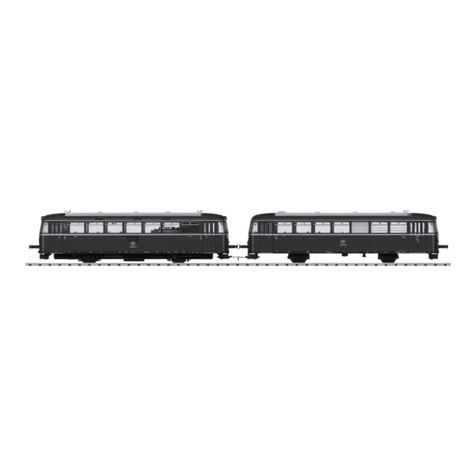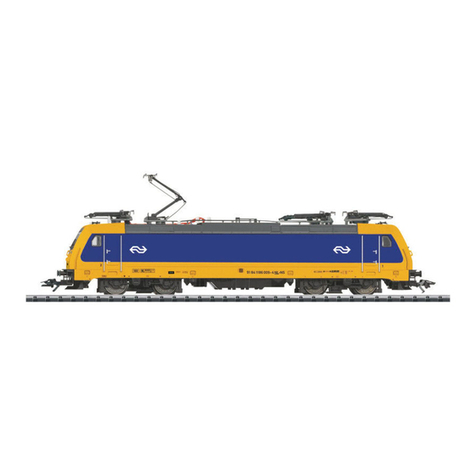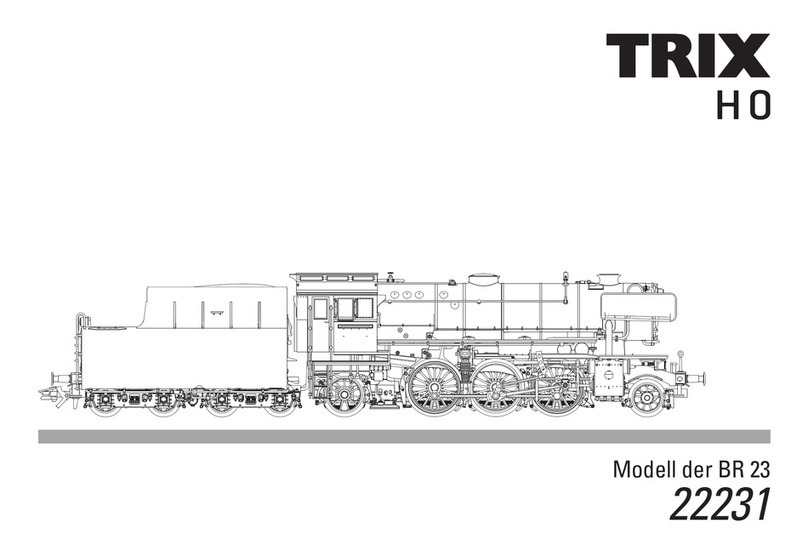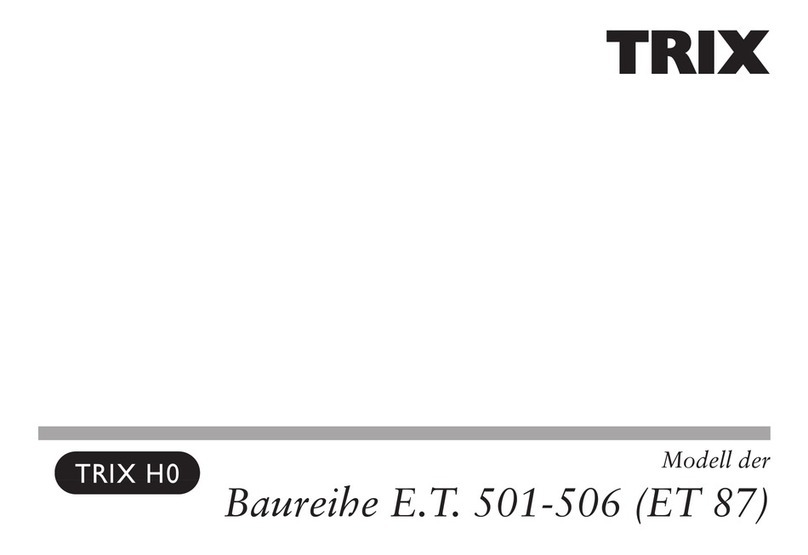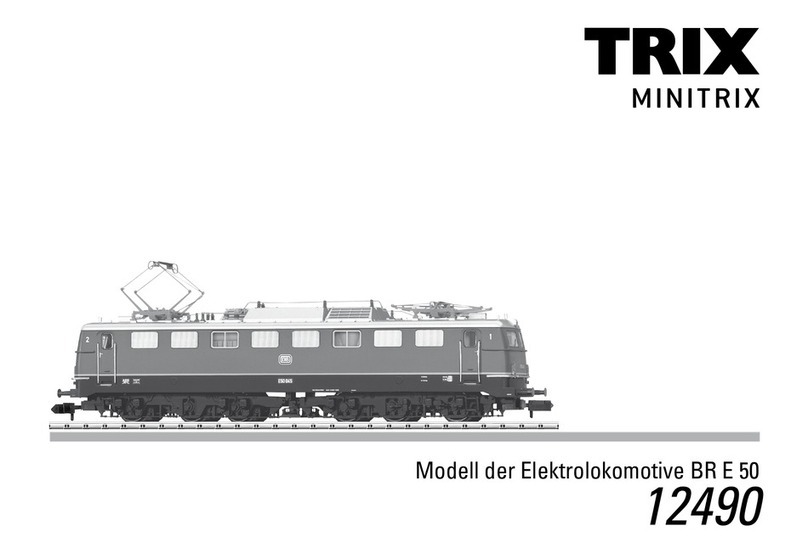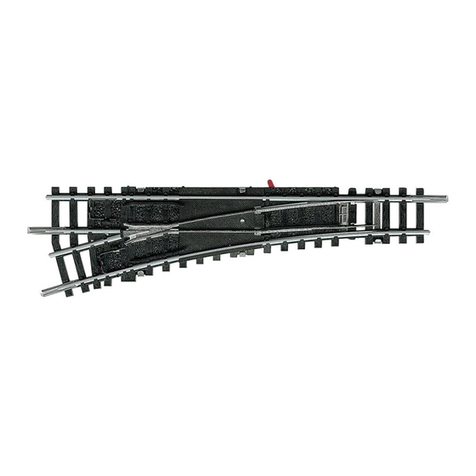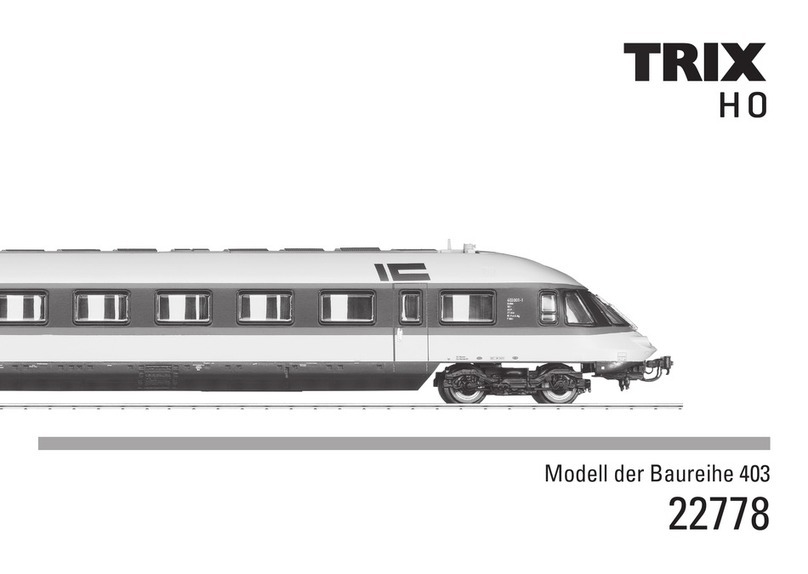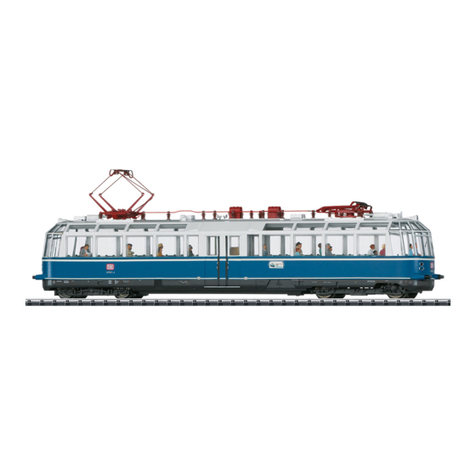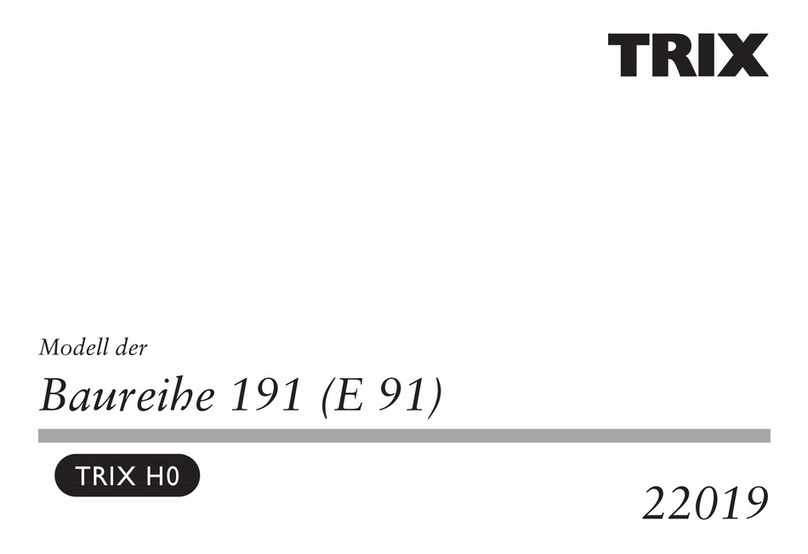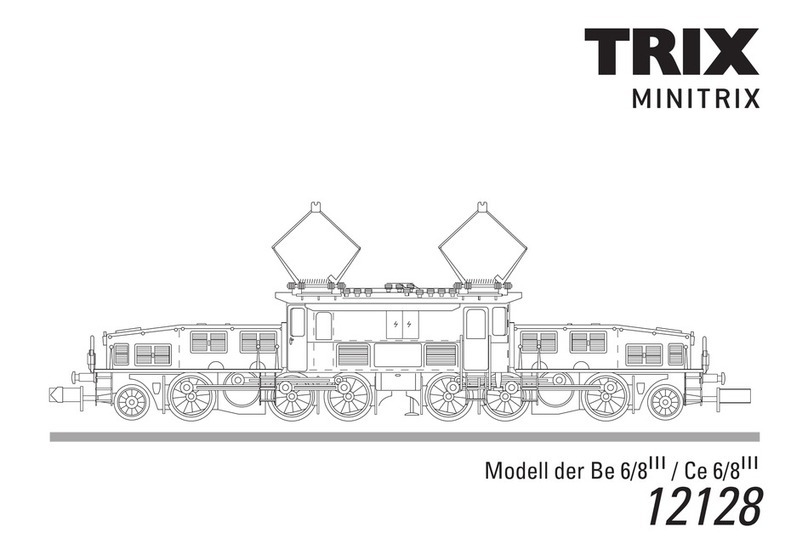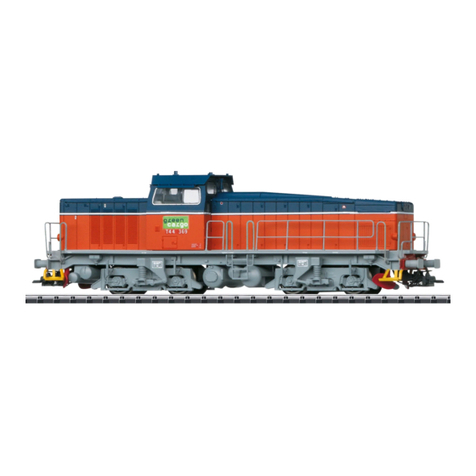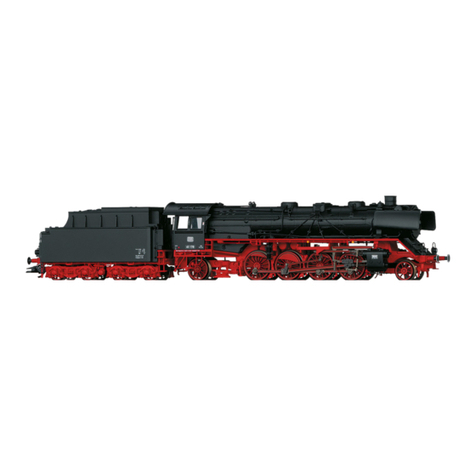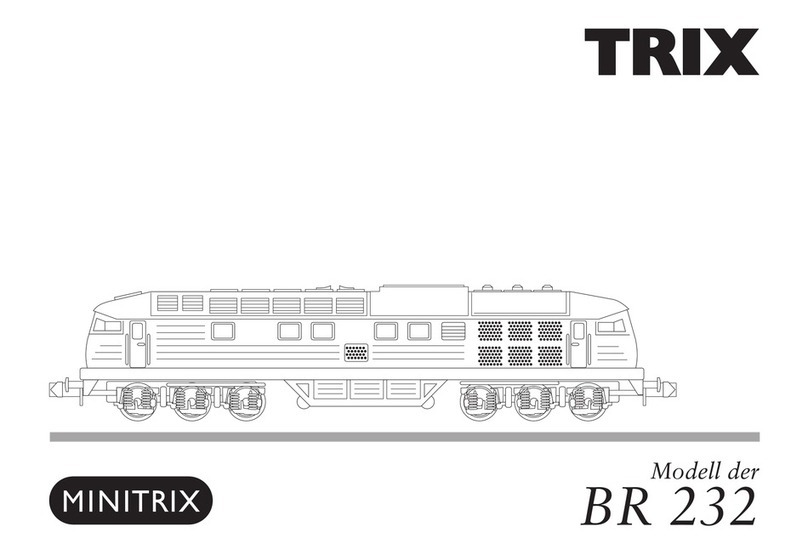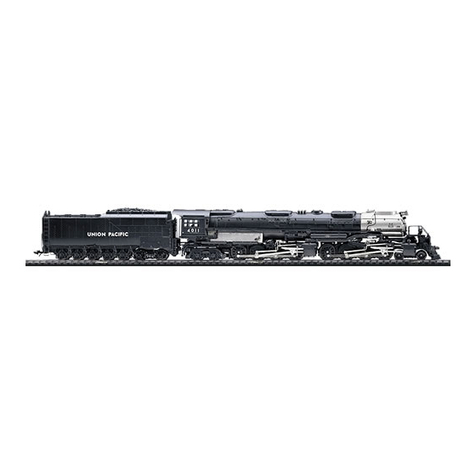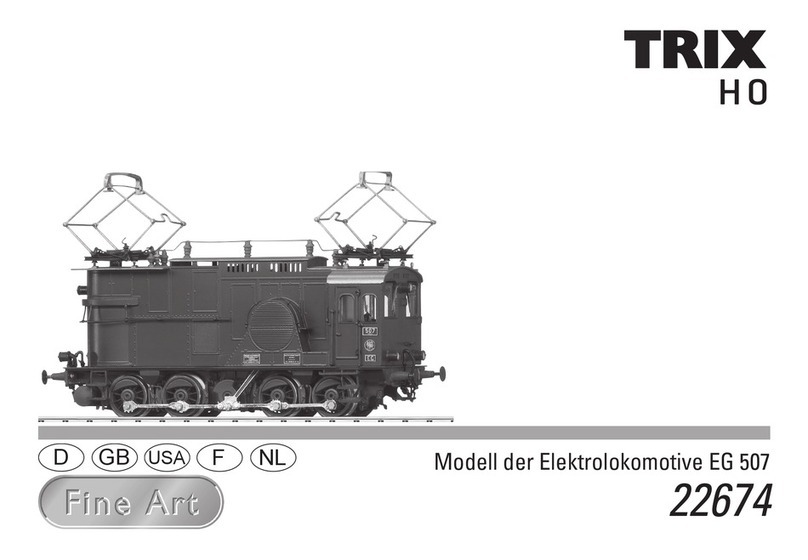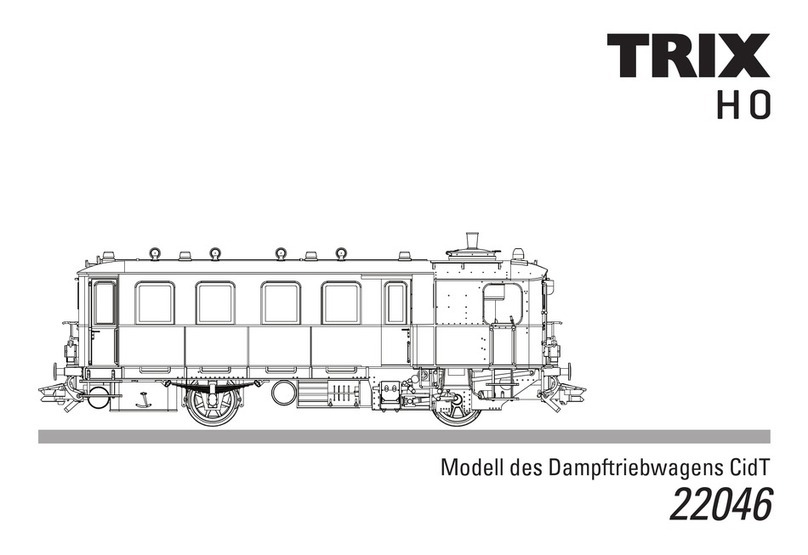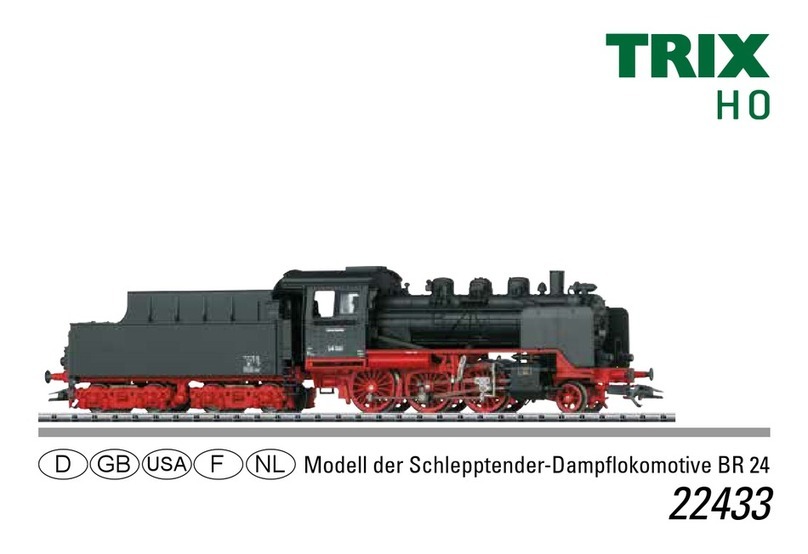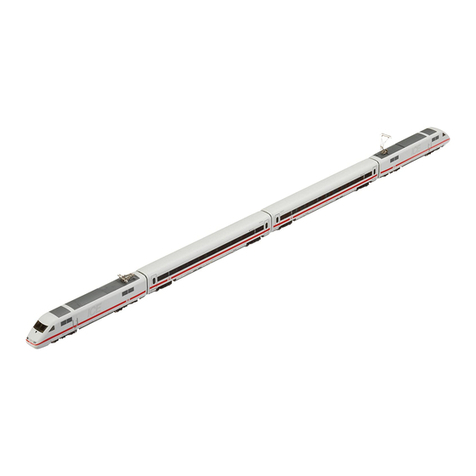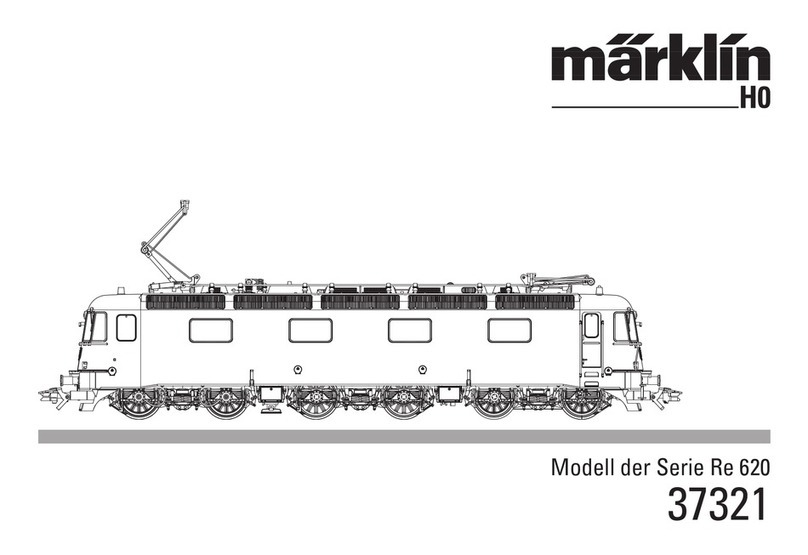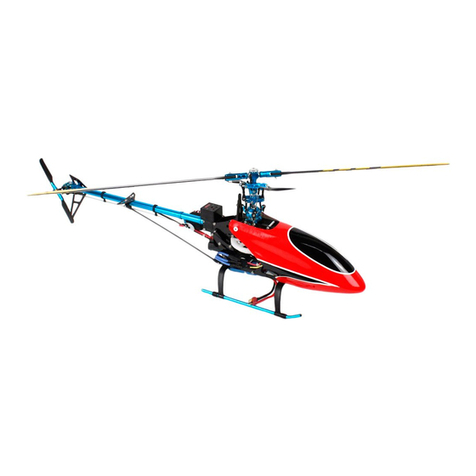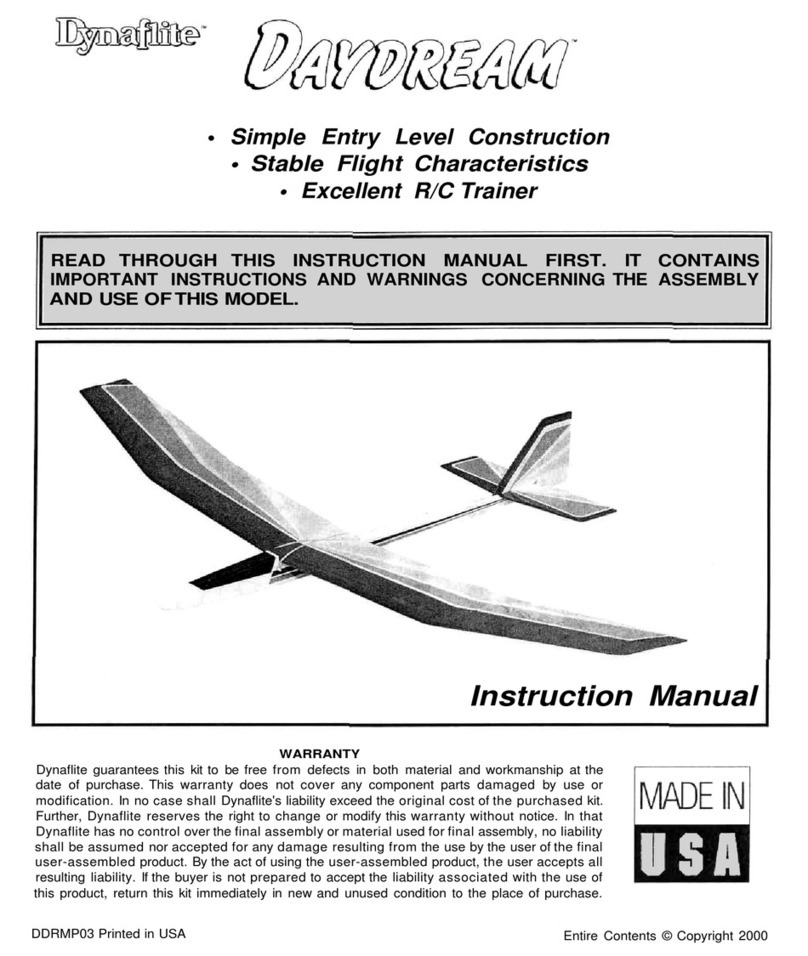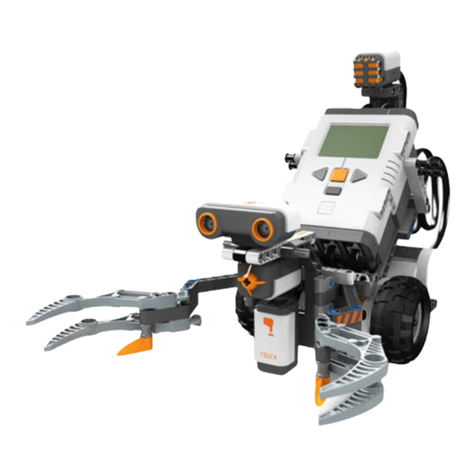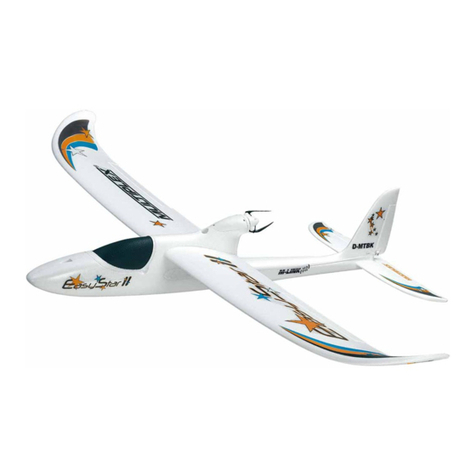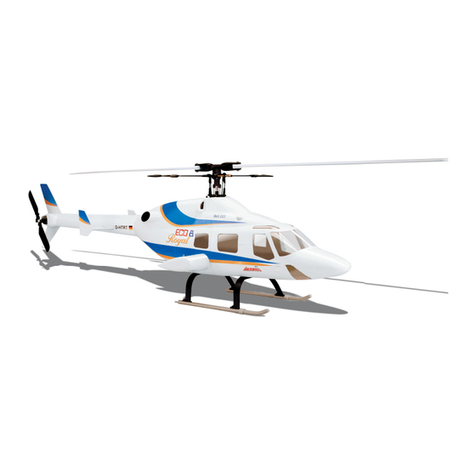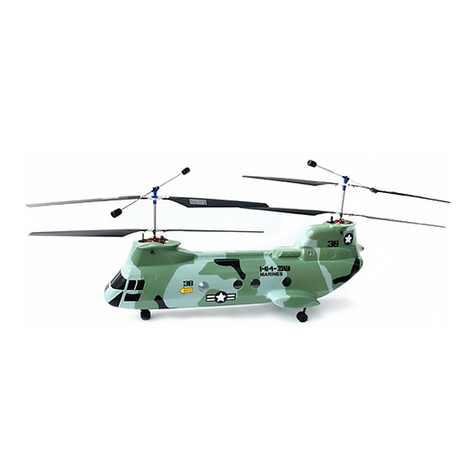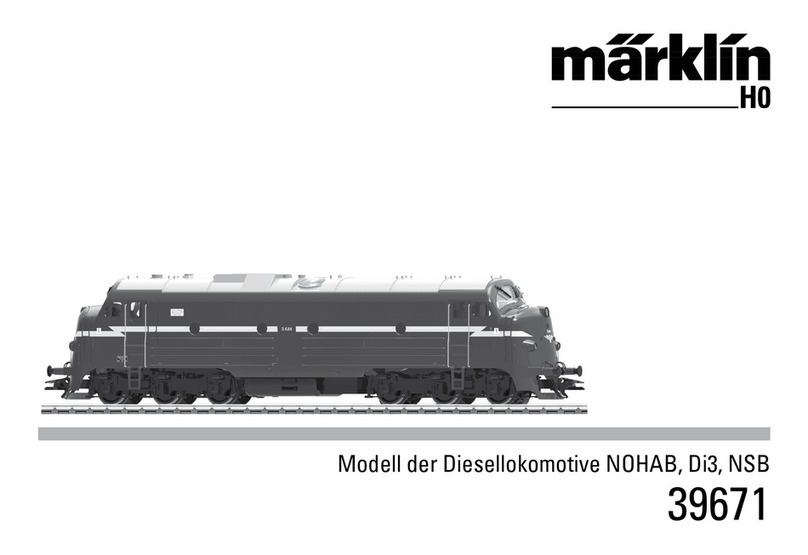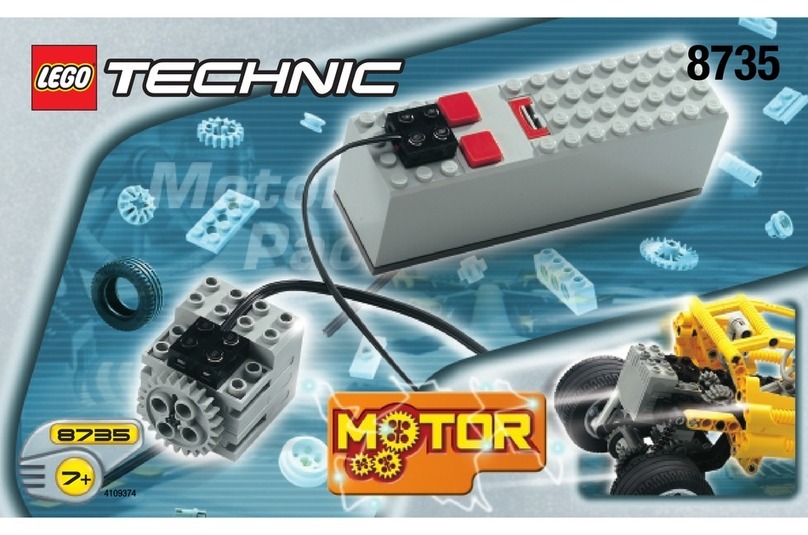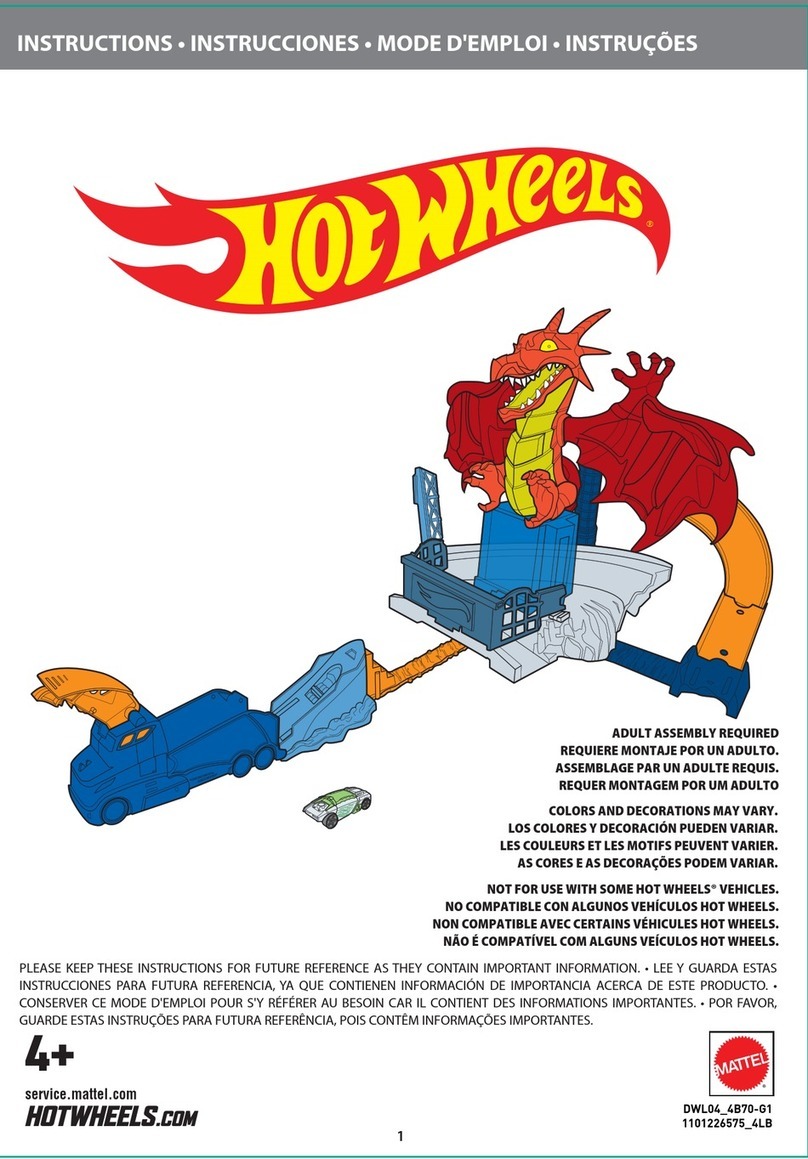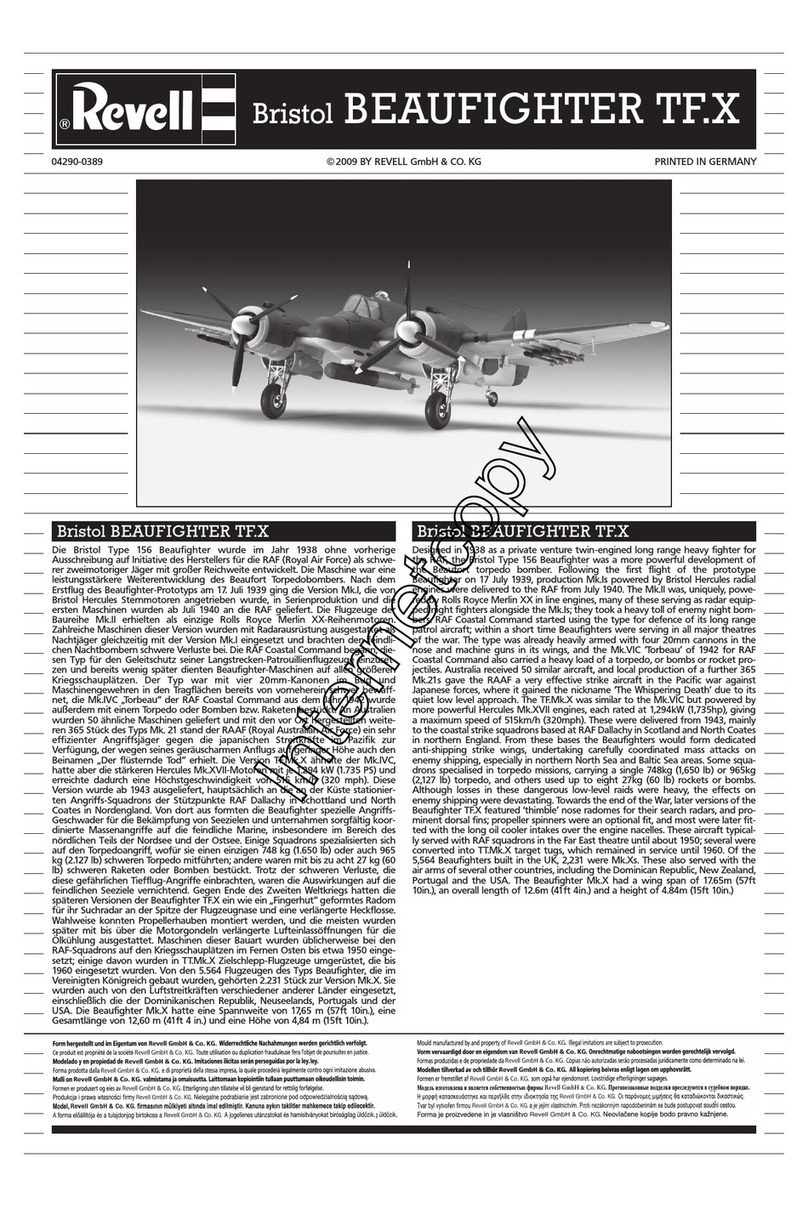
7
Informations concernant le modèle réel
Au début des années 1960, la DB décida de développer le
trafic voyageurs croissant avec la conception d’une machine
puissante.
Pour le trafic InterCity (IC 71) prévu à partir de 1971, la pro-
duction en série de la série 103 fut entreprise à partir de
1969, mais avec un nouveau cahier des charges: Les charges
remorquées des trains TEE et IC roulant à 200 km/h passèrent
de 300 à 480 t et des trains directs de 800 t devaient encore
être remorqués à une vitesse de 160 km/h. Pour les 145 loco-
motives de série – désormais désignées comme série 103.1
– le principe de base de la construction de l’engin avec châs-
sis-poutre, caisse de la loco constituée de cinq segments et
bogies à trois essieux suivit les prototypes.
Les trente derniers exemplaires (103 216-245) furent dotés
d’un châssis rallongé de 700 mm avec postes de conduites
agrandis afin de satisfaire la demande pressante de l’équipe
de conduite quant à l’agrandissement des postes exigus.
Après leur livraison dans les années 1970 à 1974, les 103.1
reprirent immédiatement les nouveaux trains IC et naturelle-
ment aussi les prestigieux TEE qui, en partie, avaient même
été intégrés dans le nouveau réseau IC. Ce n’est qu’après
plus de trente années de service dans le trafic voyageurs
lourd haut de gamme, avec un kilométrage extrêmement
élevé, que les locomotives de série circulèrent pour la der-
nière fois en service régulier, en décembre 2002. Quelques
exemplaires furent conservés dans le parc pour des rempla-
cements ou services spéciaux. Deux machines (103 113 et
245) sont aujourd’hui encore disponibles en état de marche
au dépôt de Munich de la DB AG pour des services de longs
parcours et sont régulièrement sorties.
Informatie van het voorbeeld
Begin jaren ‘60 besloot de DB om het groeiende verkeer van
reizigerstreinen met de ontwikkeling van een efficiënte ma-
chine verder uit te bouwen.
Voor het InterCity-verkeer (IC 71), gepland vanaf 1971, werd
vanaf 1969 de serieproductie van de serie 103 opgenomen,
maar met een nieuw verlanglijstje: De treinbelasting van
TEE- en IC-treinen met een snelheid van 200 km/u stijgen van
300 naar 480 ton en 800 ton zware D-treinen moeten met een
snelheid van 160 km/u nog vervoerd kunnen worden. Bij de
145 serielocomotieven, voortaan als serie 103.1 aangeduid,
diende de basisbouw van het rijtuiggedeelte met brugframe,
locomotiefbehuizing in vijf segmenten en drieassig draaistel
voor het prototype.
De laatste dertig exemplaren (103 216-245) kregen een frame
dat 700 mm werd verlengd met een vergrote machinistenca-
bine, om tegemoet te komen aan de dringend gevraagde ver-
groting van de enge machinistenruimte voor het personeel
van de locomotief.
Na de levering in de jaren 1970 tot 1974 namen de 103.1 met-
een de nieuwe IC-treinen over en natuurlijk ook de prestigi-
euze TEE, die nu deels zelfs in het nieuwe IC-netwerk werden
geïntegreerd. Pas na meer dan dertig jaren intensief gebruik
in het zware, hoogwaardige passagiersverkeer met prachtige
kilometerprestaties reden de serielocomotieven in decem-
ber 2002 hun laatst geplande ritten. Met het oog op een re-
servebestand en voor uitzonderlijke ritten bleven een aantal
exemplaren verder in het bestand aanwezig. Twee machines
(103 113 en 245) staan momenteel nog altijd bij de DB AG in
Werk München voor vervoerdiensten over lange afstanden
bedrijfsklaar ter beschikking en maken regelmatig een ritje.
